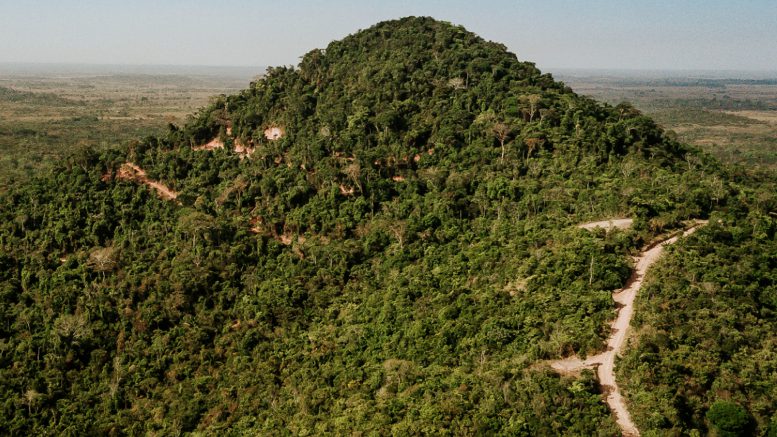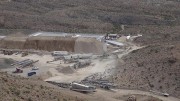As we enter 2023, the transition toward clean energy is intensifying. In some areas of the globe, carbon neutral idealism is giving way to a panicked “War on Carbon” as the impact of climate change becomes more tangible, and unfortunately disruptive, to the average person. As regions like Europe experience unprecedented winter warmth and the southwest United States grapples with an unusual dichotomy of severe flooding and extreme water shortages, governments are taking action with a variety of carrots and sticks aimed at achieving global decarbonization.
Policy “carrots” have come in various types of support for the production and supply of minerals critical to clean energy generation, power transmission and storage, and electric vehicle production. Some examples include Canada’s Critical Minerals Strategy (December 2022), the United States’ American Battery Materials Initiative (October 2022), the European Union’s Critical Raw Materials Act (September 2022) and Brazil’s Strategic Minerals Policy (March 2021). With many countries loath to repeat historic dependencies on energy imports, there is a growing sense of urgency to secure massive supplies of select metals as the world moves from “a fuel-intensive to a mineral-intensive energy system,” according to the International Energy Agency (IEA).
While these “carrots” are important, the policy “sticks” are far more prescriptive in incentivizing, and in some cases mandating, change. Canada and the European Union (EU), for example, are phasing out the sale of new, fuel-burning cars over the next decade with a complete ban taking effect in 2035. Other countries are developing plans to follow suit, while many of the world’s largest carmakers have committed to phasing out fossil-fuel vehicles by 2040. Gas furnaces and stoves are following a similar downward trajectory, with recent headlines suggesting potential bans on natural gas appliances in several cities and countries to curb carbon emissions.

David Strang
It is well appreciated that this green transition, along with the requisite investment in clean power infrastructure, is going to lead to unprecedented copper demand over the next two decades. However, what is less appreciated is the degree to which incremental copper supply remains stunted despite the proliferation of supportive government policies. Moreover, there is an emerging stratification in copper supply based on the carbon-intensity of primary production that is being driven by growing consumer preferences for low-carbon goods as well as the anticipated adoption of carbon taxes.
While the carbon-intensity of upstream supplies may seem esoteric, a product’s total carbon footprint is increasingly influencing consumer purchasing decisions. To cater to the ethical and sustainable consumerism mindset, companies are attempting to build a competitive advantage through “green retailing.” Uber customers, for example, are now able to choose more sustainable transportation with “Uber Green.” Brands like Allbirds and Rothy’s have developed cult-like followings for their eco-friendly footwear that garners higher prices than eco-unfriendly equivalent footwear. Younger generations of car buyers who are looking to buy their first car are, in many cases, going straight to electric vehicles, much in the same way that younger generations have gone straight to iPhones and completely foregone landline phones. With personal consumption driving approximately two-thirds of global economic activity, companies are recognizing the financial benefits of feeding the consumers’ appetite for greener goods and services.
While the pioneers of green retailing are positioned to benefit from premium pricing, the laggards are being pushed to catch up with carbon taxes. In December 2022, the EU announced a Carbon Border Adjustment Mechanism (CBAM), essentially a carbon tax, which will start being phased in this October. This tariff will offer a financial impetus for buyers to discern between high and low-carbon imports and will also contribute much needed funding for Europe’s green transition. With annual global clean energy investment needing to rise above US$4 trillion by 2030 to achieve net zero emissions by 2050, according to the IEA, other governments are likely to follow Europe’s carbon tax lead.
The phased implementation of Europe’s CBAM will also coincide with required Scope 3 emissions reporting. Scope 3 emissions are those that are indirectly generated by a business, including carbon emitted in the use of a company’s product. For example, a car manufacturer’s Scope 3 emissions include all carbon generated by its customers’ use of the vehicles it sells to them. Likewise, in the mining industry, a supplier of mobile mining equipment will need to include carbon emitted at the mining operations where its equipment is used in its Scope 3 emissions disclosures. Disclosing high carbon emissions or failing to reduce carbon emissions may impact a company’s access to, or cost of, capital. As a result, a supplier’s pricing on its mobile equipment is likely to reflect the carbon-intensity of its customers’ operations, with “low-carbon customers” receiving preferential pricing and availability of equipment over “high-carbon customers.”
It is quickly becoming clear that businesses’ carbon emissions are starting to impact bottom lines. And for the mining industry, the carbon footprint and profitability of each tonne of metal produced is becoming increasingly intertwined as the global decarbonization movement grows and matures. Conventional cash cost curves used to evaluate mining company profitability are now being used in conjunction with carbon-emissions curves to guide the investment decisions of significant pools of capital. Green credentials are no longer a “nice to have” but a “must have,” and as the world moves full steam ahead toward the green energy transition, mining companies that are already producing low carbon-intensity metal have a significant competitive advantage.
Unlike other industries that can relocate their facilities and operations, mining companies are largely constrained to the energy resources and power infrastructure local to where they operate. Mining operations located in countries like Brazil and Canada benefit from decades of government investment in renewable power generation and infrastructure. Conversely, remote deposits and operations without access to clean energy sources are at a significant disadvantage that, in some cases, cannot be reasonably or economically overcome. In the copper market, a bifurcation in supply between low and high carbon-intensity production, largely driven by the geographic location of reserves and resources, is being magnified by grade declines across the industry, necessitating the blasting, transport, and processing of more ore (and the consumption of more energy and power) each year to produce the same amount of copper. Meanwhile, a panacea in the form of new technologies that could meaningfully boost recoveries, for example, to offset declining grades, continues to elude the industry.
As the War on Carbon plays out, companies with low carbon-intensity production are likely to benefit from premium pricing for their product, easier access to and more attractive pricing on supplies and equipment, and a lower cost of capital relative to peers with a high carbon-intensity production. In turn, the global decarbonization movement will redefine the mining industry landscape, including the copper sector, in the years ahead with “green” producers likely to experience financial tailwinds that ultimately translate to superior valuations and share price performance. Clearly in this new decarbonized world, not all copper is created equal.
—David Strang is chief executive officer of Ero Copper Corp.






Be the first to comment on "Not all copper is created equal in a decarbonizing world"